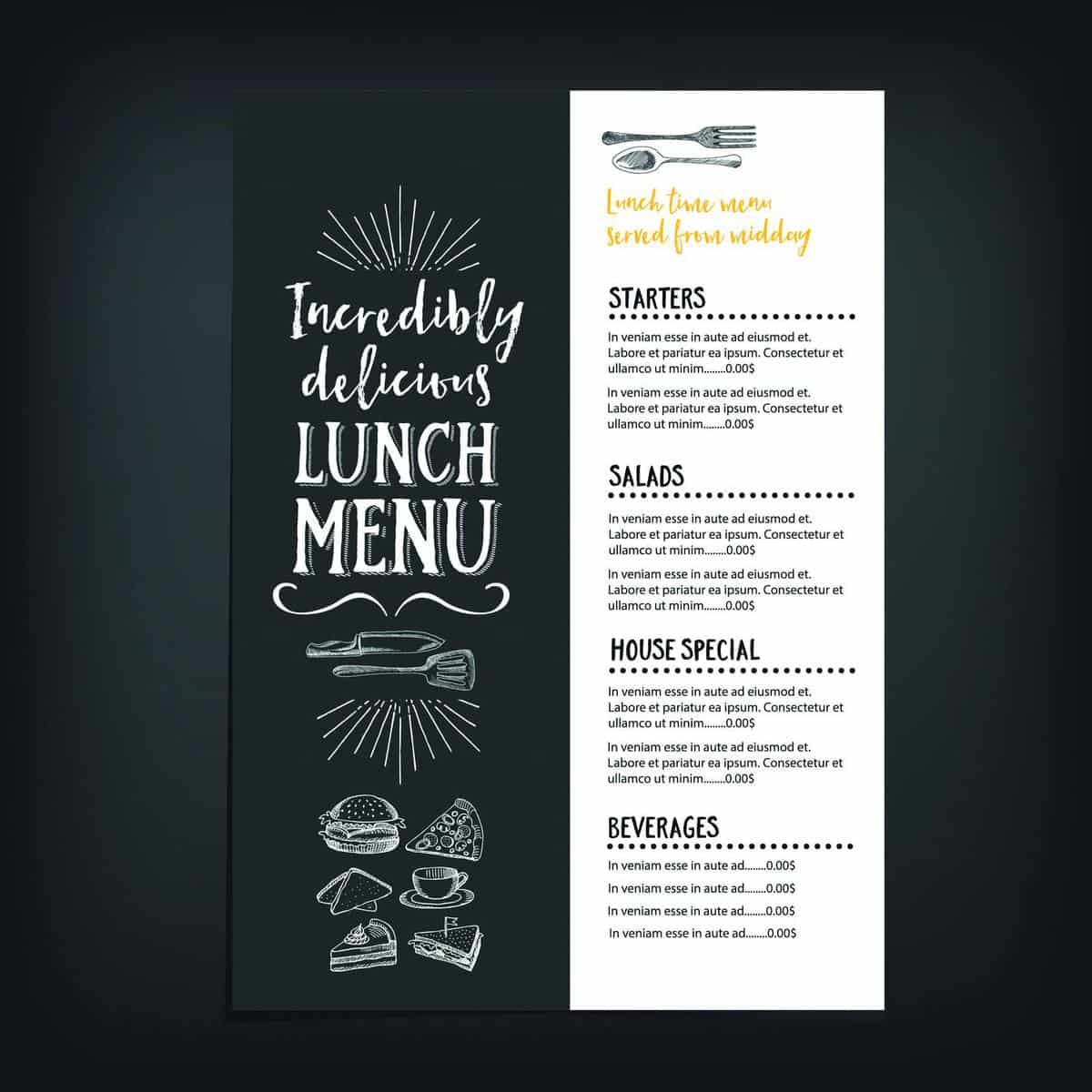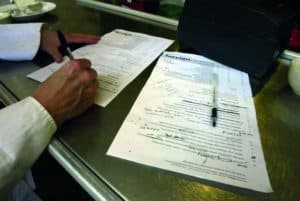
How to write a restaurant menu
Here’s how to write a restaurant menu that’s tempting and tantalising, whilst telling your customers what they need to know to make an informed menu decision.
You’ve spent endless hours in the kitchen, tasting, testing and re-trying your restaurant’s dishes to ensure that they’re just right. Now they’re ready to serve to your customers, but there’s just one problem: they have to be motivated to order them from your menu first.
Of course, you don’t want to give too much away; but when patrons have the potential to spend a lot of money with you, they want to be sure that what they are ordering is exactly to their taste.
So, how do you write an exciting restaurant menu? Whether you’re revamping your menu or starting from scratch, here are some pointers to help you bring your menu to life.
Choosing the tone for your restaurant menu
Getting your restaurant menu’s tone of voice right is the most important aspect to consider. If your restaurant has a clearly defined theme or branding, then choosing a tone of voice for your menu (and wider marketing) should become much easier.
Keeping your customer base in mind is essential too; this helps you to ensure that you’re addressing them appropriately, and is all part of the experience of making them feel welcomed and comfortable right away.
For example, the menus of a French fine dining restaurant and a casual, American-style diner would probably read very differently. Let’s pretend that we’re describing a classic dish: steak and chips, with a green side salad. Here’s how two different types of restaurants might describe it on their menus:
French fine dining restaurant:
‘Steak frites; the classic French dish. Locally raised, 10 day matured 8oz filet mignon accompanied by hand-cut potatoes, fresh spring greens and buttery, aromatic Béarnaise.’
American-style diner:
‘A juicy 8oz fillet steak, cooked just how you like it. Served with a heaping of crispy French fries, a crunchy side salad and a pot of creamy steak sauce for smothering.’
So as you can see, the same dish can be altered simply by using different words and phrases. Talking about the provenance and preparation of your ingredients certainly makes them feel more special and unique, which is perfect for a fine dining establishment; on the other hand, at fast-casual eateries, your customers may be less interested in where their food comes from and more in their flavours and value for money.
Top tips for how to write a restaurant menu
Need some help to get your creative juices flowing? Here are our top restaurant menu writing tips:
- Bring your dishes to life with words: As we’ve explained above, the right words are everything when it comes to describing your dishes. Use words that describe the flavours, aromas and textures: consider how evocative phrases like ‘fragrant, lightly spiced and creamy curry’, ‘soft, freshly baked artisan bread’, and ‘crispy sourdough base topped with tangy tomato sauce, hot melting cheese and a sprinkle of torn basil leaves’ are, and how they’ll help customers to envisage the dishes even before they arrive at the table.
- Add plenty of personality: You’ve put a lot of passion and character into the dishes that you’ve created, so don’t be afraid to let that come across. Many restaurants have found fame (or infamy) by giving their dishes witty or even risqué names or descriptions. This might not be appropriate for every restaurant, but if you want to get noticed, it could work for you!
- Keep it short and snappy: Customers will feel frustrated by lots of information about dishes, or overly complicated descriptions. One or two lines is enough for a menu description, especially if you’ve lots of dishes to choose from.
- Explain your menu where necessary: Your menu should be clear enough to be understood by new customers, so think about whether any components of it may need to be explained. For example, if you offer sharing dishes or tapas, it’s helpful to include some pointers as to how many people the dishes will serve, or how many should be ordered per person.
- Share some insider information: If there’s an interesting fact about one of your dishes or its ingredients, such as its provenance, include it on your menu. It helps to make your dishes sound more unique and intriguing, and customers will be more excited to give them a try.
- Clearly include allergy or dietary information: Don’t forget your customers with dietary requirements when writing your restaurant menu. Make sure that the most common allergens are clearly indicated on your menu, and if you serve dishes that are created for specific diets such as gluten free, vegetarian or vegan, highlight them so they can quickly be found without the need for customers to ask their server.
- Ask an expert to help: Recruiting a professional writer to help with your menu wording could make the world of difference in bringing your dishes to life. Plus, they’ll help to prevent any misspellings or grammatical errors that could prove embarrassing – or costly to fix once your menus are printed!
- Trial your menu before printing: Before investing the money to have your menu professionally printed, trial a paper version with your customers first and ask for their feedback. Are the dishes what they expected? Does the menu accurately describe the dishes? Did they even understand the menu? Use their feedback to refine your menu writing.




